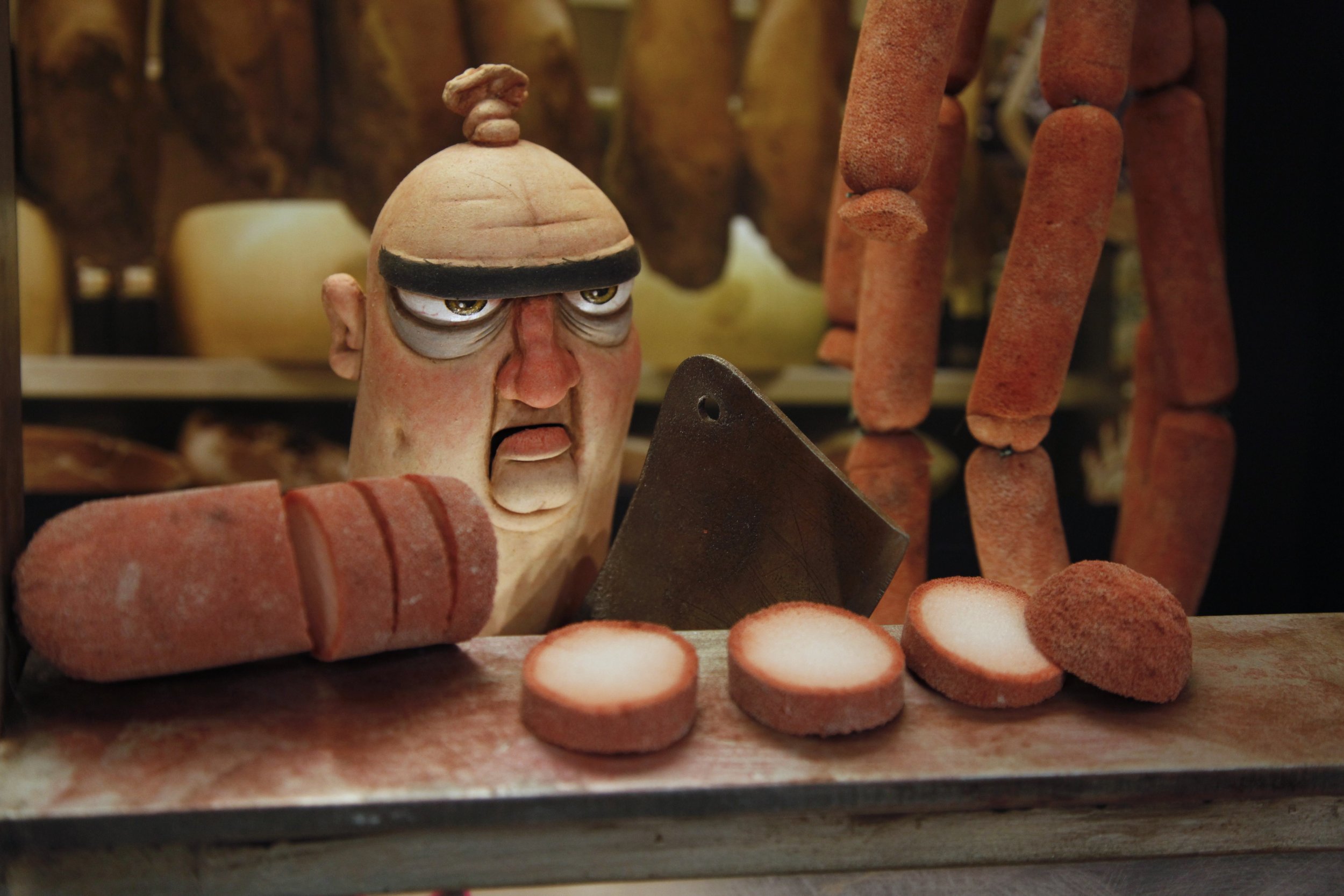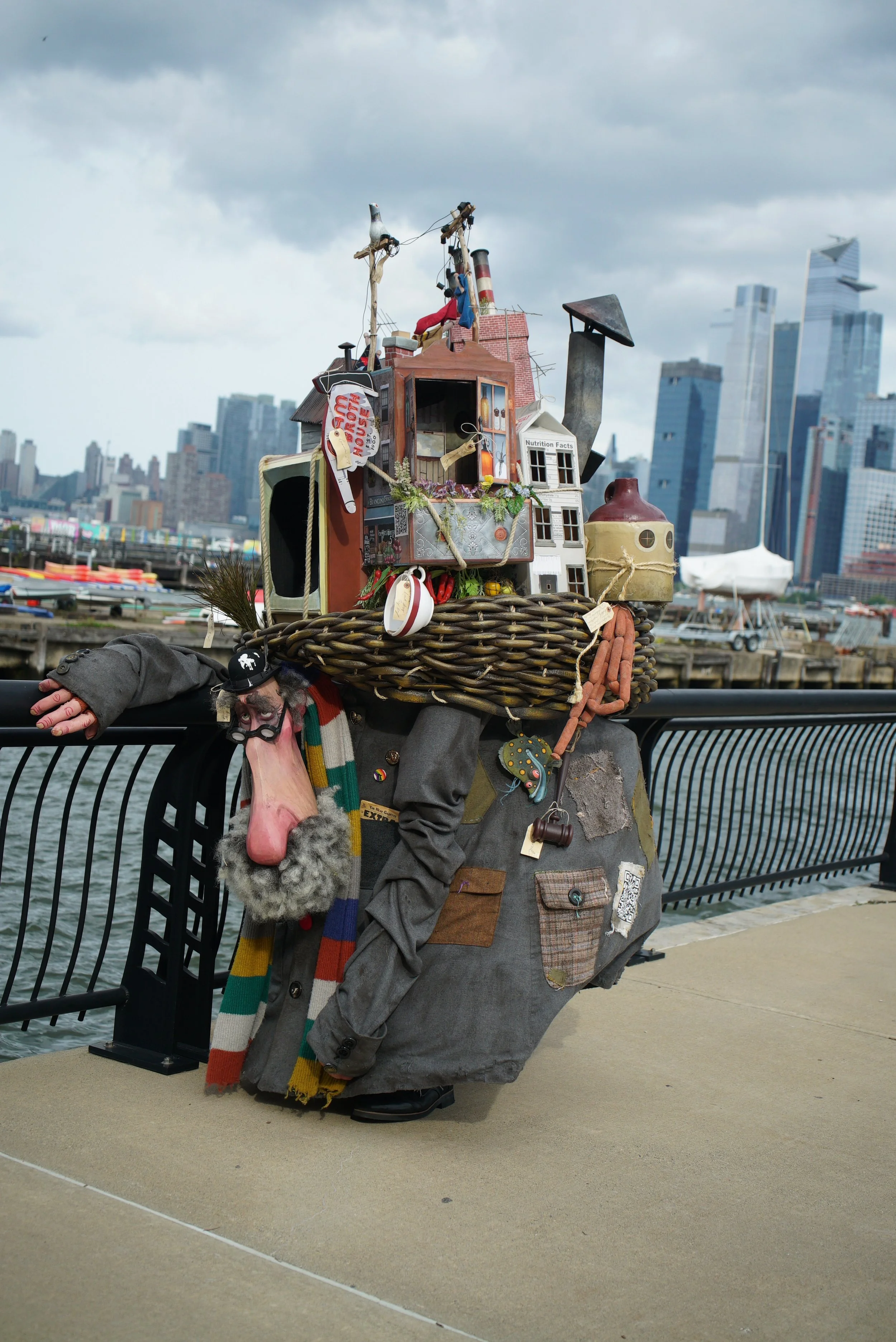magic behind the fibres of puppets with Puppet Heap

The story goes that puppetry began with ancient ritualistic dolls. These figures, often depictions of humans or gods, were manipulated in a way that foreshadows modern puppetry – though it's important to understand this wasn't about mere amusement. While the precise age of these objects is still under investigation, they've been found across a surprisingly broad geographical spread, including Africa, Asia, India, New Zealand, North America, and Mexico. The discovery of puppets in Egyptian tombs from around 2000 BCE suggests this practice is at least 4000 years old. Historians are now focused on determining whether Ancient Egypt or Ancient India can definitively claim the title of puppetry's origin.
Fast forward to the 21st Century, what role does a puppet play?
We speak to artist, designer, filmmaker, and professor Paul Andrejco, founder of Puppet Heap about this almost dying craft, the revival of puppets, and its current position in the craft world. We also speak to Sunjay Venkatraman, Marketing Director at Art House Gallery about their upcoming show, “The Heap at Art House” on March 27th.
Puppet Heap is a character design studio in Hoboken, NJ, specializing in puppetry across media. The company does a lot of design, fabrication, and production work for a variety of clients around the world, including The Walt Disney Company, Sesame Workshop, and Nickelodeon. Outside of client work, Puppet Heap has their own stories to tell in hopes of resonating with a wider audience globally.
In the early 90s, Puppet Heap began not in a grand studio, but in a cramped apartment overflowing with puppets and experiments. Driven by a desire for independent creation, Andrejco wrestled with limited resources and emerging video technology. This period was a constant balancing act between earning a living and pursuing personal projects—a challenge that persists today. Yet, within this struggle, a vision to challenge the status quo of puppetry was forming.
While key moments like The Bear in the Big Blue House, collaborations with Mitchell Kriegman, Wonderpets, and caring for the Muppets marked the path to recognition, the artist's journey reflects on passion and ambition, not mere luck. These experiences were strategic steps. The Animator Festival retrospective validated his vision. “But the peak experience for me personally was showing my films at a retrospective at the Animator Festival in Poland. Not sure if you’d call that a big break or not, but it meant a lot to me. They were well received and it kind of legitimized my passion. An important mentor of mine from my time at RISD, Marcin Gyzicky, one of the founders, had been following my work, my short films, over the years and invited me there. I think that was in 2011. But while these were some wonderful opportunities, and I am so grateful for all of them, the “big break” or “big breakthrough” is yet to come.”
Is there a hidden magic in puppetry?
There is. It really happens in the audience's imagination, though. There is a certain triad that is formed when the puppet, or more specifically what’s been called “the performing object,” mediates a relationship between the performer and the audience. The magic happens when the performer and the audience both project their imaginations on this otherwise inanimate object. They are sending and receiving signals through this medium at the moment. It’s almost scary how willingly people narrow their focus, their expectations, and believe in the reality put forth. The puppeteer, like a magician, or a huckster, or a politician, deliberately limits the observer's frame of reference, temporarily condensing their entire perception into a highly simplified set of laws and then tells a story with them. It’s the most transparent of illusions and yet it works every time.
Do you use traditional or more modern and tech-savvy methods of making the puppets?
Both really. My team and I have a foot in both worlds. So much of puppetry is tactile. It really happens outside of your head, in your hands. And you want to preserve a kind of simplicity in how one approaches the medium--whether viewing or performing puppetry. So while we still work with traditional materials and techniques, like papier mache and plaster, new technologies, and new materials, extend one’s ability to experiment and iterate which allows us to work more efficiently, more responsibly, and explore more possibilities. It allows us to do more with less. It will enable us to explore new properties embodied in performing objects--even virtual objects--which to me is a fascinating area of exploration.
Do your puppets reflect you? Your hidden desires, your deepest fears? Is puppetry a way to confront your own inner demons?
Most definitely. It gets the horror out of my head and into my hands where it becomes more manageable. Even ridiculous. It can allow you a perspective on the things that trouble you. It helps me to laugh my inner demons back to hell where they belong. My hope is that it helps others do the same.
What's the story behind the Collecting Friends puppet/costume?
That is “The Heap.” This is an idea I had been sitting on for a long time, ever since there was a Puppet Heap. He is meant to be a platform for a variety of stories in all kinds of media. So, he’s a collector of objects--things, places, people--and the stories they contain. Here he is, this little old man bent under the weight of a lifetime, heaped high upon his back. He spends his days roaming the world collecting discarded objects--each carefully tagged, numbered, and strapped to this pile towering over his head. To most, he is known simply as “The Heap.” All that stuff he carries with him is alive with stories, and when you keep that many stories mixed up long enough, well, they’re going make stories of their own—not all of them pretty—but somehow they manage to live together in this creaky little island village teetering on the old man’s back. The idea has, of course, evolved as I have evolved over the years. There’s a lot of me in there, I think. I’m constantly picking up little trinkets off the street and musing about what they might be or where they came from, usually completely ignorant or disinterested in the actual truth of the thing. And his story is my story--my frustrations and addictions, my regrets and failures--all the baggage I carry with me. And, it turns out, other people see their story in him too, which is a wonderful connection. I’m not the most social person in the world, so it really is the best feeling when something I make touches another person in a meaningful way.
Puppetry is an ancient art form. Do you feel a connection to the puppeteers of the past? Is there a responsibility to preserve tradition, or is innovation essential for the art form to survive?
I do indeed. It’s usually the traditional forms I find most inspiring. Pulcinella, Guinol, Budaixi, Bunraku, Mamulengo. These seem most detached from a performer's ego and exist on their own terms, as all puppets should. I do think we have a responsibility to preserve the traditions but through innovation. Traditional forms of puppetry have come about through centuries of innovation. The innovations that stick are the ones that don’t interfere with the fundamental nature of the performing object. I think we can certainly dress them up in contemporary clothes, but the knock of the wooden head will always be the thing that delights us.
Does a puppet have a soul?
Yes, I believe so, if the soul is truly the immaterial aspect of any system--the nature, the “ness” of the thing. Like a hammer wants a nail. A puppet is constructed and, whether purposefully or accidentally, has a function, the thing that it does, a behaviour, a set of properties. This is the soul of the puppet--and maybe the soul of all things. The undeniable nature of its being. It’s imprinted on the world around it. The effect it forever has on all things by virtue of it having existed. To perform puppets successfully you have to embrace that. You have to embrace the idea that the puppet wants. It’s useless to fight it.




Perhaps puppets are the actors, the storytellers, the poets and the writers of the creative mind and world. On stage or on TV they embody the narrative in its entirety, beyond human capability, with grace and passion. But where does the stage end and reality begin for a puppet? It seems that “the world is your stage” applies deeply to such creations, or dare we say, beings. The Heap is on an exploration path and heading to Art House for a very intimate Q&A event. Sunjay Venkatraman tells BRUT of the coming show and its magic.
Tell us about Art House and your mission.
Art House Productions is a non-profit visual and performing arts organisation based in Jersey City, NJ. Formed in 2001 following the tragic events of 9/11, Art House created a space for artists and the Jersey City community to convene and use art as a form of healing. The mission of Art House Productions is to inspire, entertain, and challenge audiences with ambitious performing and visual arts programming; provide arts education to promote lifelong learning to diverse communities, and celebrate the power of the arts to illuminate humanity. Our goal is simple, to present innovative, diverse, and accessible arts programming to the Jersey City community.
What caught your interest in Puppet Heap and showcasing them in the gallery?
I first got word of Puppet Heap when they collaborated with The Hoboken Historical Museum. I started following Puppet Heap and eventually reached out via Instagram to learn more and connect with their team. I had the privilege of seeing The Heap perform in Hoboken and that's when I first met Cindy. The Puppet Heap team was warm and welcoming, and I knew that we had to work together in some capacity. Upon inviting their team to Art House, we started to spitball ideas for collaboration, to which we landed on presenting a pop-up gallery exhibit, and a performance in the Art House Gallery.
What's expected of the "The Heap at Art House" show?
Magic. Guests got a glimpse of The Heap in the Art House Gallery, and now they can see him come to life! Puppet Heap has created these spectacular short films that will be presented in the Art House theatre. Narrated by The Heap, these films will showcase some of Puppet Heap's iconic characters. To cap off the evening we will have a live Q&A with Paul Andrejco to discuss his vision for the future, the inspiration that drives him, and the methods for creating his work.
Special thanks to Cindy Campos Alves (Business Development & Marketing Director at Puppet Heap) for making this article possible.
Sign up for Puppet Heap’s newsletter at puppetheap.com






